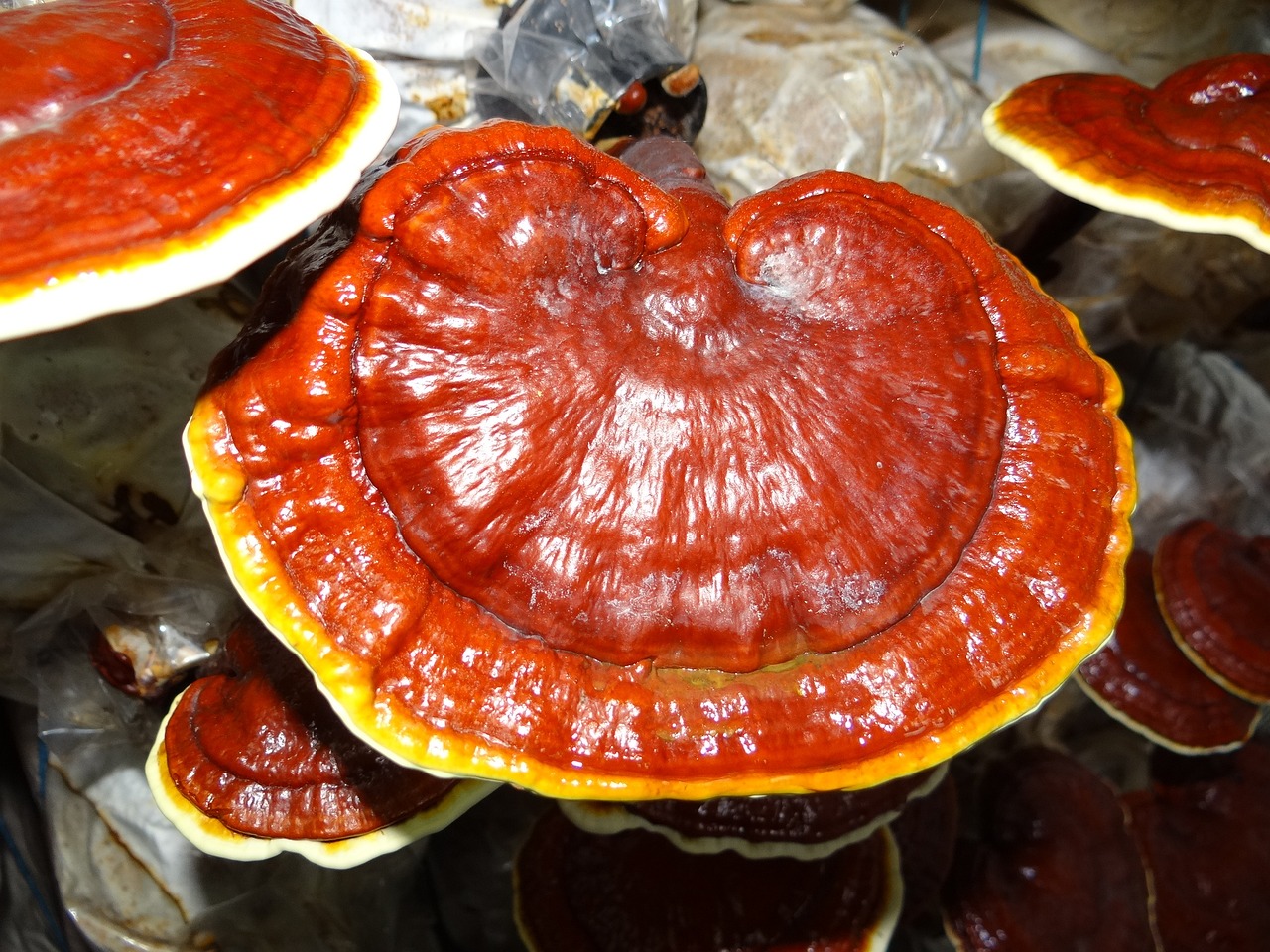Reishi mushrooms, scientifically known as Ganoderma lucidum, have gained recognition for their remarkable health benefits, particularly in stress reduction and immune system modulation. Reishi contains bioactive compounds, including triterpenes and beta-glucans, which contribute to these health-enhancing properties.
Reishi is often referred to as an “adaptogen,” a natural substance that helps the body adapt to stress and maintain balance. It’s believed to reduce the body’s stress response and promote a sense of calm, making it a valuable addition to a wellness-focused lifestyle.
Moreover, Reishi’s immune-modulating effects can help regulate the immune system, making it beneficial for both immune-boosting and immune-suppressing conditions. It can enhance the body’s defense mechanisms, potentially reducing the risk of infections and supporting overall well-being.
Incorporating Reishi into your diet through supplements or teas can be a soothing and supportive choice to reduce stress and maintain immune system balance, contributing to a healthier and more balanced life.
Reishi mushrooms, scientifically known as Ganoderma lucidum, typically grow in the wild on dead or dying hardwood trees, particularly oak and maple. Here’s a simplified explanation of how Reishi mushrooms grow in their natural habitat:
- Wood Colonization: Reishi mycelium, the vegetative part of the fungus, colonizes the dead wood of hardwood trees. The mycelium consists of thread-like structures that break down the wood’s cellulose and feed on the decaying organic matter.
- Fruiting Body Formation: When environmental conditions are favorable, such as adequate moisture, temperature, and humidity, Reishi mushrooms form their fruiting bodies. These fruiting bodies emerge from the wood as the part of the mushroom that we harvest and use for various purposes. Reishi mushrooms have a shiny, lacquered appearance with a distinctive reddish hue.
- Spore Dispersal: Once the fruiting bodies mature, they release spores from their pores into the surrounding environment. These spores can be carried by the wind to potentially colonize other suitable dead wood nearby.
In addition to their potential medicinal uses, Reishi mushrooms have been an integral part of traditional Asian herbal medicine for centuries, valued for their potential health benefits. Cultivating Reishi in the wild contributes to the decomposition of dead wood and the recycling of nutrients in the forest ecosystem, supporting the health of the environment.
Cultivating Reishi Mushrooms:
Cultivating Reishi mushrooms at home is an option for those who want to enjoy the potential health benefits of this remarkable fungus. Here’s a basic guide on how to grow Reishi mushrooms:
Materials You’ll Need:
- Reishi mushroom spores or culture.
- Hardwood logs or sawdust-based substrate blocks.
- A drill with a 5/16-inch bit for logs or bags/containers for substrate blocks.
- Cheese wax or another suitable wax.
- A clean and sterile work environment.
- A shady, well-ventilated space or outdoor area.
- Shade cloth or other means of indirect light.
- A misting bottle for humidity maintenance.
Step-by-Step Guide for Log Cultivation:
- Prepare the Logs:
- Select hardwood logs, such as oak, maple, or sweetgum, and cut them into suitable lengths. Drill holes into the logs at regular intervals and insert Reishi spores or culture.
- Seal the Holes:
- Seal the holes with cheese wax or another appropriate wax to prevent contamination. The wax helps maintain a moist environment for mycelium growth.
- Incubation Period:
- Store the inoculated logs in a shady and well-ventilated area or outdoors, ensuring they remain moist. The Reishi mycelium will colonize the logs during this period, which may take several months.
- Shock and Fruiting:
- Once the mycelium has colonized the logs, “shock” them by immersing the logs in cold water for 24-48 hours. Then, return them to their original shady location. This triggers fruiting. Maintain high humidity by misting the logs regularly.
- Harvest the Mushrooms:
- As Reishi mushrooms mature, harvest them by cutting or twisting them from the logs. Reishi logs can produce multiple flushes over several years.
Reishi Extract:
Reishi extract is a concentrated form of Reishi mushroom’s beneficial compounds. It’s typically produced by boiling or steeping dried Reishi mushrooms in water or alcohol, and then evaporating the liquid to leave behind the extract. Reishi extract is commonly available in various forms, including tinctures, powders, and capsules.
This concentrated extract is prized for its potential medicinal properties, including immune system support, stress reduction, and overall well-being. It’s often used in traditional and alternative medicine practices for its adaptogenic and health-promoting effects. Reishi extract offers a convenient way to incorporate the benefits of Reishi mushrooms into your daily routine.

